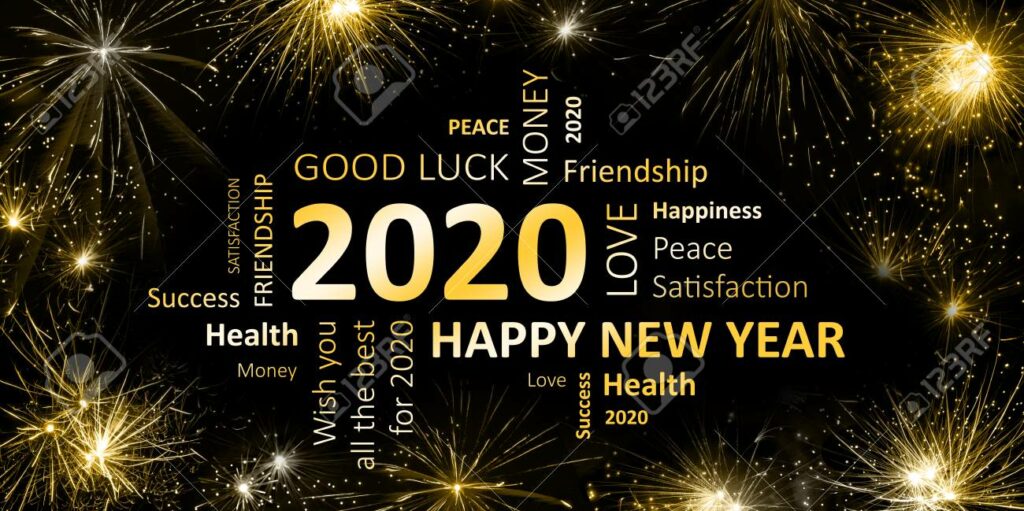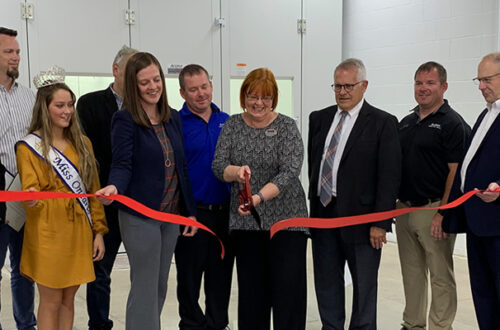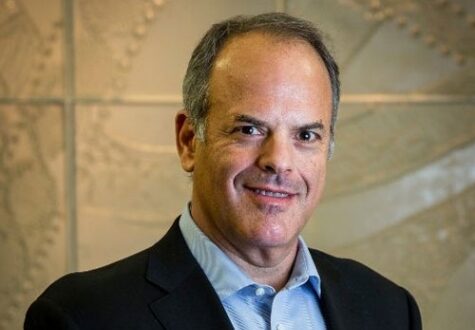Collision Repair Industry Associations Make 2020 New Year’s Resolutions

For many, making a New Year’s resolution is an important part of celebrating the calendar changeover, and the most common resolutions are intended to improve an individual’s life – losing weight, learning something new, or saving more money.
Studies show that 46% of those who make a New Year’s resolution are likely to succeed. Associations supporting the collision repair industry have also begun to evaluate what improvements they can make as the old year draws to a close, and several industry leaders were willing to share their 2020 New Year’s resolutions with Autobody News.
A common resolution amongst association leadership is focused on growing their organization’s membership and meeting their members’ needs. Judell Anderson, executive director of AASP-MN, began, “We will continue to work on increasing member engagement. Members are the lifeblood of the association, and without their participation and input, the Alliance cannot be as impactful as we otherwise could be. Whether volunteering for committee service, communicating with legislators, utilizing member benefit programs or simply being aware of and supporting our various initiatives, the Alliance will ultimately be stronger and more effective in our work on behalf of the industry if members are fully engaged. To that end, the association will work to create a more robust social media presence and overall communications strategy to more effectively engage members in all aspects of our work in the coming year.”
Ray Fisher, executive director of ASA National, stated, “Wow, it’s hard to choose just one with all we have planned for 2020. Our focus in 2020 is our members. To that point, we want to help our affiliates even more with their event promotion while leveraging new programs, like our podcasts, to achieve success. We’ll also see the return of C.A.R.S. at the ASA Annual Business Meeting in the Dallas-Fort Worth area next year.”
ABAT Executive Director Jill Tuggle hopes that the group will continue expanding their membership base, and she said, “We have joined forces with HABA and will be looking to grow our membership especially in the western part of the state.”
Burl Richards, president of ABAT, added, “Stay the Course … don’t take your foot off the gas pedal. We’ve made great strides, and we are educating and making the industry better and stronger by sticking together and taking the time to continually push the boundaries to move the needle.”
ASA Northwest’s 2020 Chairman Elect Bryan Kelley plans to enhance the association’s focus on members’ needs. “I often feel like we believe we know what our members want, and we then try to fill that belief. Instead, we should be constantly surveying and asking the big questions: what do our members really want from us? Once we have that information, we need to focus on the application and delivery. If you ask, they know you care, and if they know you care, they will continue to support you while you begin to navigate through change,” he pointed out.
AASP/MA Executive Director Lucky Papageorg plans “to continue the momentum and growth of AASP/MA based on that platform of attaining a fair and reasonable labor rate while continuing to protect the consumers and collision repair industry. We’ll also be putting together a two-year business plan for the association and setting obtainable goals with greater participation at all levels.”
IABA has some exciting things coming up in 2020, including the transition to a new and improved website and members’ portal. IABA President Doug Martin shared, “This will help us push out info to the membership and keep them up to date with the event’s happening across the state. We will still have our quarterly chapter meetings, and several sponsors have committed to bring in key people to help us facilitate.”
Legislative efforts continue to be a large priority for associations in the collision repair industry as 2020 approaches. Martin added, “A huge thing for the IABA is that we have hired Jack Molodanof, a California Auto Body Association lobbyist, as a government relations advisor to the IABA. Jack has tremendous knowledge of the collision industry and will help us build relationships in the state house along with the department of insurance. We are very excited for the new year.”
CAWA plans to “complete a due diligence process to examine the establishment of a vehicle safety inspection program in the state of California,” Executive Director Rodney Pierini shared, and Fisher stated, “Expect more focus on our advocacy efforts in Washington, D.C., particularly as it relates to PMVI program legislation, data access, cyber security and our ongoing efforts to represent the independent repair shop community on telematics and cybersecurity developments in 2020.”
Bob Amendola, ABAC president, intends for the association to “continue to strive for increased consumer awareness and empowerment regarding OEM parts, safe and proper repairs and their legal rights after an accident/as the vehicle owner. We plan to do so through social media and a series of informative videos that we are in the midst of producing. They will be released through an upcoming social media campaign in the beginning of the coming year.”
“Technology – including advanced safety and crash avoidance systems and new manufacturing materials – has resulted in the need for collision repair shops to make significant investments in tooling, equipment and training in order to conduct safe and proper repairs in accordance with manufacturer specifications,” Anderson shared. “Our OEM procedure legislative proposal aims to ensure appropriate insurer indemnification to insureds and third parties for the safe and proper repair of damaged vehicles, thereby improving the safety of the motoring public.”
As technology continues to change constantly, the need for training becomes increasingly prevalent, and recognizing this imperative, many associations put a lot of emphasis on delivering valuable educational content to their member base. MSCRA Executive Director Ricki Garrett’s goal “is to host an even bigger and better conference and to provide our membership with excellent training opportunities. We also want to grow our membership through enhanced benefits.”
ASA Northwest President and Executive Director Jeff Lovell looks forward to growing the association’s new ATE East program, and NATA plans to host its second roundtable on April 25; Executive Director Cathi Webb said, “We hope to expand this meeting to reach even more influencers in our students’ career paths.”
According to ARA Executive Director Sandy Blalock, the association plans to “continue to grow the educational content of the ARA University, incorporating training from industry suppliers and vendors as well as content submitted by ARA members themselves.
The goal is to make the ARA University a living, breathing resource that is adding relevant content in real-time as the educational needs of the professional automotive recycling industry adapt to the dynamic automotive repair sector.”
KABA Vice President Tony Adams noted the importance of getting “more information in the hands of our members to perform safe and proper repairs, so we can fulfill our mission of protecting Kansas current and future drivers.”
ASA North Texas President John Firm stated, “Our goal is to help our membership with reduced cost of training and bring purpose to our meeting to help manage our members manage and operate their business more profitable.”
AASP/NJ plans to continue providing education to members and encouraging members to share their successes with one another. President Jerry McNee stressed, “We are all in this together!”
The industry also recognizes the need to pull together to ensure the future of the collision repair industry, and to that end, many associations have implemented various programs to ensure that future technicians are being properly trained. In addition to “continuing to perfect our training event, the ASTE,” IGONC intends to “add to our apprentice program,” stated Tricia Sauls, associate executive director. “We are hoping to have 50 kids enrolled by graduation 2020.”
NABA Vice President James Rodis said, “Our New Year’s resolution would have to be to get our youth opportunity council off the ground better. This is a program to help get more kids into our state’s auto body classes and try to break that mold of auto body technicians being a last resort job. We also want to just continue to grow the association so, as a group, our voices are louder.”
WAC’s biggest goal in 2020 is “to stick with our path of working with the industry and schools to get industry related curriculum into all middle and high school classrooms as part of STEM learning,” President Shelly Jones stated. “We have started something big and intend to see it through. In addition, we intend to bring more speakers from various organizations into our meetings.
These non-industry orgs have proven to be very valuable to our mission and great connections for our members and their companies.”
Some associations believe that the future generation isn’t the only way to attract more talent, and these groups would like to incorporate a little more diversity into the industry. Jody Devere, founding board member of WIA, pointed out, “Only 26% of all employees are women in the automotive industry in all roles; in 2020, we would like to hit 30% or more. Gender parity is not just the right thing to do – it is the profitable thing for our industry to do. Equality for women could lead to a massive boost to the economy. Research from McKinsey found gender equality could lead to a global economic boost of between $12 trillion and $28 trillion by 2025.”
AWAF would also like “to increase the number of younger women, both within our membership and on the board. AWAF offers mentoring, coaching, professional development, and access to senior executives, which are crucial to professionals beginning their careers,” according to President Susan Rokosz.
WIN Chair Cheryl Boswell added, “One of the goals for WIN in 2020 is to resource the industry with new information regarding how to attract and retain more women (and men) in this amazing industry!”
For SCRS Executive Director Aaron Schulenburg, it’s important to evaluate industry needs and make changes every day, not just for the New Year. “The cultural aspects that guide SCRS into 2020 remain unchanged. It’s doing the right things, in the right way, for the right people, for the right reasons. The work we do for our members is for the right people. These small business owners, and the people they employ, work in a very challenging environment going into 2020,” he said. “I firmly believe that the programs and resources we’ve worked to build, driven by the culture described above, will help make their businesses more successful, and the conditions less challenging going forward. It’s not a new year resolution, but an ongoing commitment by the many volunteers and staff members around our table to help make this industry better than it was when we entered it.”
With these association leaders leading the charge for 2020, the collision repair industry is in for another year of improvements, progress and inspiration. Happy New Year!


